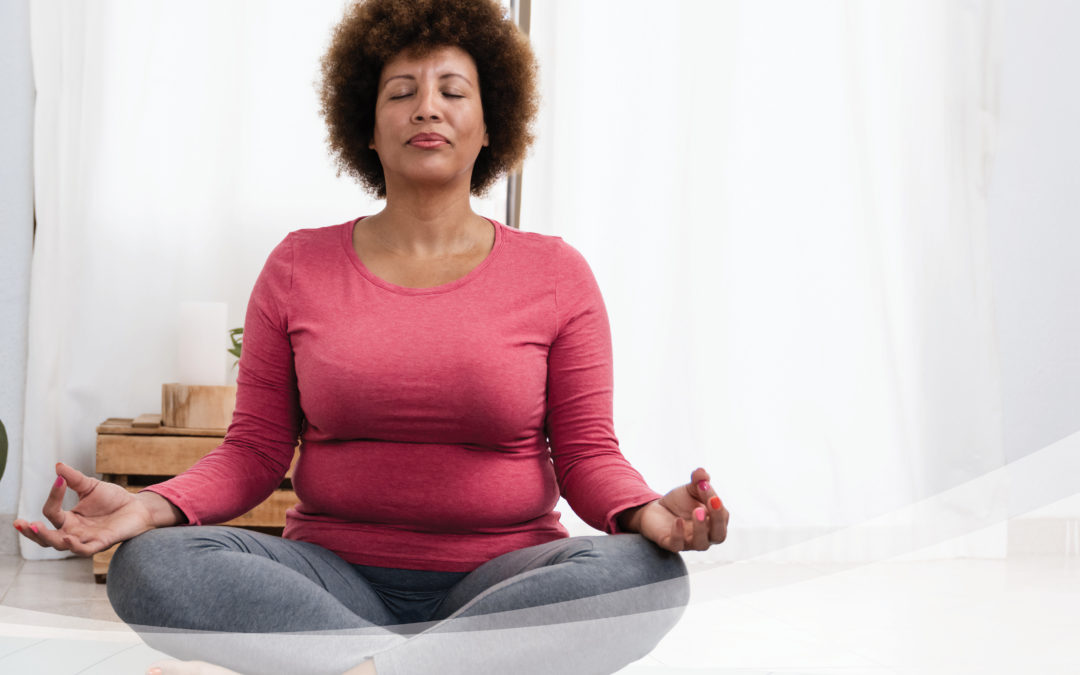In our last blog we discussed the benefits of yoga to someone suffering from chronic pain. There are many types of yoga that can be done by people of all fitness levels.
Anytime you try a new exercise program, it’s a good idea to consult your physician, this is especially true if you have chronic pain. It is important to find activities that don’t aggravate your symptoms but provide you with gentle movements that can improve your flexibility and overall sense of well-being.
When a person has chronic pain, the body is in a state of continuous stress. The central, peripheral, and sympathetic nervous system can be in a state of hyperarousal. This hypersensitivity can adversely affect sleep, appetite, energy level, emotional state and can even change the way we breath. Two important components of yoga are breathing and meditation.
When in pain, breathing tends to be shallow and thoracic, in attempt to not cause further pain. After months (or years) of chronic pain, this type of breathing contributes to muscle tension and pain. Yoga breathing is deeper, coming from the diaphragm and promotes muscle relaxation. This purposeful focus on breathing takes practice, however, can lead to deeper levels of relaxation, especially when combined with gentle stretching.
Meditation is more than emptying your mind of negative thoughts. Studies have shown that meditation can reduce inflammation, and the negative response to painful stimuli. Additionally, it can increase emotional flexibility and the relaxation response. Meditation takes practice! Guided meditation is an easy way for beginners to start and there are apps that can be downloaded to help you get started.
Here’s a simple yoga exercise you can try to help you tune into your breath and thoughts.
Start with a simple relaxation pose such as laying on your back. Place your hands on your belly and feel the movement of the breath. Notice the belly rising and falling and notice the breath moving in and out of your body. Imagine the breath moving throughout your body, starting at your feet. Imagine the breath entering your body through the soles of your feet and exiting your body through the soles of your feet. Notice any sensations there. Feel, or imagine, that flow of energy in the feet as you breathe.
Now repeat this visualization for other parts of your body: Your lower legs, knees, and upper legs. Your hips, lower back, middle back, and upper back. Your belly and chest. Your shoulders, upper arms, elbows, lower arms, hands. Your neck. Your forehead and the crown of your head.
When you reach an area that feels tense or painful, don’t ignore or skip it. Stick with the visualization. Direct the breath right at the sensation of discomfort. Imagine that the breath is dissolving or massaging the pain. Imagine the pain or tension softening. Try moving your attention back and forth between the uncomfortable area and a more comfortable area. For a few breaths, breathe into the painful area; for a few breaths, breathe into another area. When you have worked your way through the whole body, let yourself feel the breath enter the body through your nose, mouth and throat. Imagine the sensation of breathing through your whole body, as if the body were gently expanding as you inhale and contracting as you exhale. Feel or imagine, the flow of energy through your whole body.
Meditation is another tool to help you better manage your chronic pain. At Haven Spine + Pain we will work with you to learn what tools provide you the greatest benefit and facilitate a return to an active lifestyle.


Recent Comments